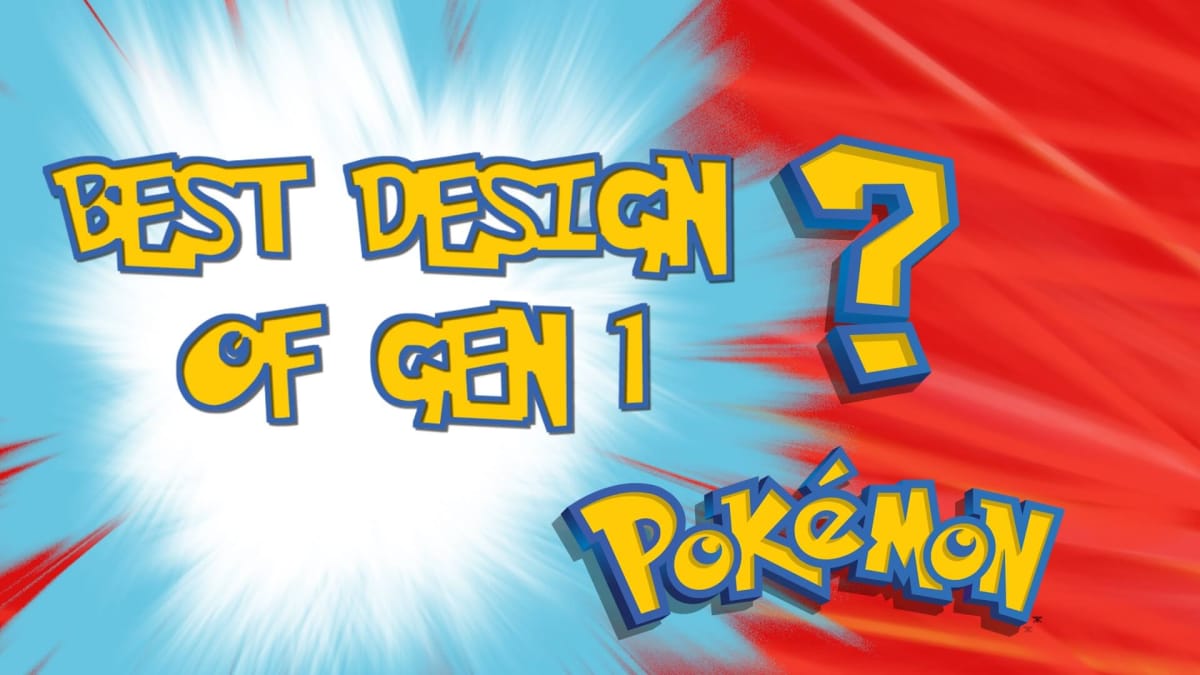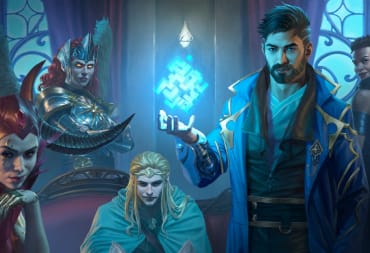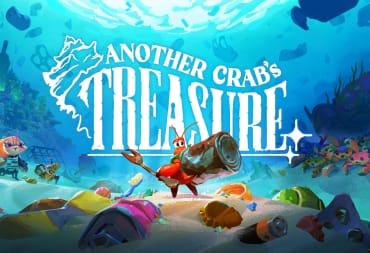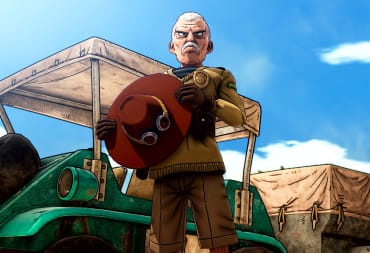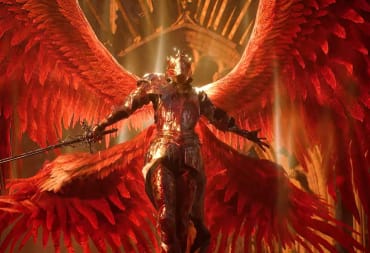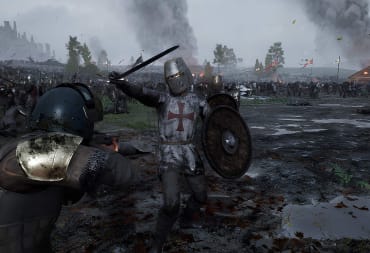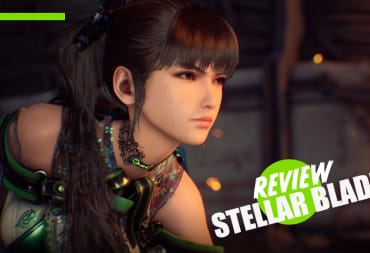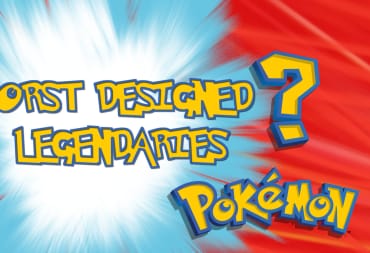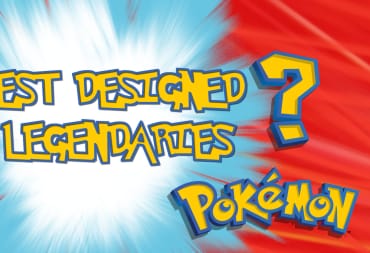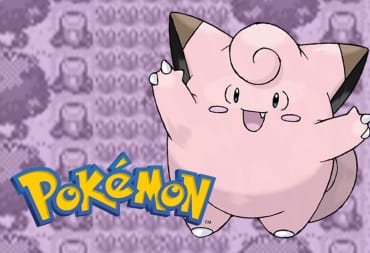With Pokémon Day behind us now, and the Year of Pokémon in full swing, I can think of no better time to wax poetically about one of the best-selling RPG series of all time. There is a lot to like in the Pokemon series. Excellent strategy games, fan-made and official tournaments, a long running anime that still has a 10-year-old protagonist—but for all of this, the heart of the franchise must be the pocket monsters themselves; the very reason many of us first fired up a game boy all those years ago.
In celebration of these Pokémon, why not have some fun in talking about them? With over 800 monsters to choose from, everyone has a perennial favorite thanks to how the Pokémon look and play in the games. So maybe now is the time to introduce a long-form project, the best and worst designed Pokémon from each generation of the games.
What better place to start with the best designed Pokémon of Generation 1, where famed artist Ken Sugimori oversaw the original 151 designs that captured the public’s attention. A lot goes into making a good Pokémon design: a theme of course to its typing, the references it invokes in its design, competitive viability, color scheme and shape—the criteria is wide open for the best and worst in the series.
A few ground rules though, just to keep things neat and tidy. First, no legendaries will be featured here, as they would ultimately dominate the list. To compensate, I will be doing a separate legendaries list later. Second, only one Pokémon per evolutionary line will be featured, even if other designs from the same line are just as good looking. Finally, the list will combine design aesthetics, competitive viability, and other aspects as part of the criteria of their design, so be ready to hear a lot of talk regarding probable move-sets as well.
With this all out of the way, here are the top 6 Pokémon of Generation 1, in alphabetical order.
Best Pokemon of Gen 1 - Bulbasaur
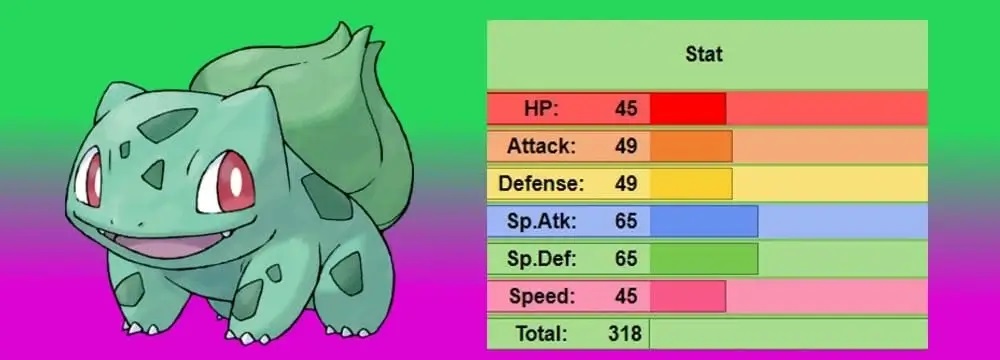
The very first Pokémon in the Pokedex, and one of the three starters of Generation 1, Bulbasaur is almost iconic in its appearance as it sets the tone for the type of monsters we see in the franchise. Part plant, part animal, Bulbasaur is defined by the large bulb upon its back, which is often stated to represent a lily bulb. His main body, of course, is based on a quadrupedal creature, with fan debates over whether Bulbasaur is based on a reptile or amphibian. One theory argues the design is based on a synapsid, a mammal-like reptile from Paleozoic times. Part of that theory stems from Bulbasaur’s facial features, notably its blunted snout and large mouth being akin to mammals over reptiles.
As a design, Bulbasaur is a winner because of its uniqueness among the starters. Squirtle and Charmander, while good designs, are clearly based on well-known animals. Bulbasaur combines several elements to create one of the most unique evolutionary line out of the first Generation starters—a beast that combines flowers with ferocity.
What compounds this is the viability Bulbasaur and its evolutionary line has when in competitive circles. While there are no restrictions using Bulbasaur in a competitive format, often its final evolution, Venusaur, gets the distinction as a potent sun-team sweeper thanks to its hidden ability chlorophyll. The addition of a Mega-Evolution also bulks up Venusaur as well, and its dual Grass/Poison typing, while vulnerable to common threats in competitive play, is highly resistant to Fairy, Dark, and fellow Grass and Poison types, providing good defensive coverage with powerful stats.
Bulbasaur itself has uses in unofficial battles, such as the Little Cup format, which pits unevolved Pokémon together in battle. It’s high special attack and defense at 65 give it some substantial power, and the introduction of Z-crystals and items such as Eviolite give the seed Pokémon sweeping and defensive potential, respectively. Bulbasaur also sports a powerful, but standard movepool of hard hitting Poison and Grass attacks, along with a ton of boosting moves and even wild card moves such as weather ball for more in - depth strategies. Overall, even the unevolved form of Bulbasaur, in the right hands, can prove to be a potentially dangerous opponent—all this adding to the overall unique design of the Pokémon.
Best Pokemon of Gen 1 - Charizard
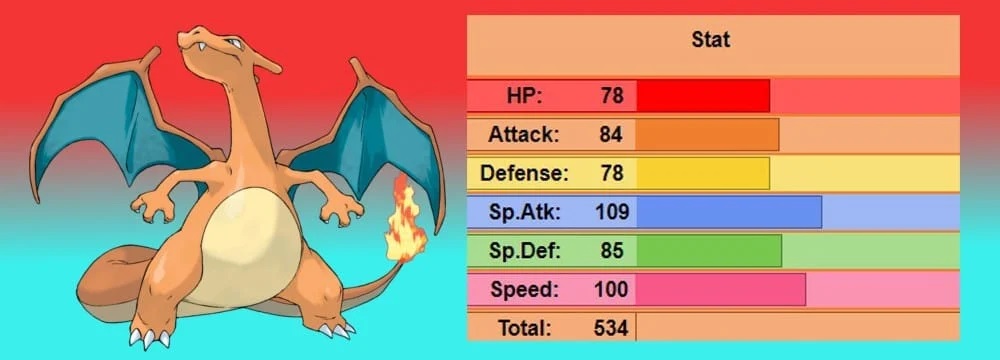
Yeah, you knew this one was on this list. Charizard is forever the poster-boy of “cool” in the Pokémon universe, mostly in part to how iconic and “cool” he was outside of the main Pokémon games. The most powerful and expensive Pokémon trading card? Charizard. The most complex personality of any Pokémon in the anime? Charizard. The most popular choice out of the Generation 1 starters? Once again, it was Charizard. He was so popular, Game Freak bestowed it two Mega-Evolutions when Generation 6 game out, and featured Charizard as the Pokémon of choice during their Pokémon Origins series.
Thankfully, the Sugimori design of Charizard is a solid example of simplistic design done right. A large, dragon-like lizard with a flaming tail, orange skin, and bat-like wings is eye catching. Charizard was oozing presence that the likes of Blastoise and Venusaur couldn’t even match. It was also the best-looking sprite of the three in the original Pokémon games, before the art style was refined to the more iconic portrayal of the monster from Generation 2 onwards.
It is somewhat ironic that Charizard was the hardest of the three starters to use not only in the first Generation, but in competitive formats. Charizard’s biggest flaw was its dual Fire/Flying typing, which gave it a massive weakness to Rock and Electric attacks. It was also stat-wise the most balanced of the three starters, but this balance saw Charizard effectively outclassed in terms of pure power and speed. The inclusion of two mega-evolutions of course mitigated most of those flaws, as have the introduction of hidden abilities in Generation 5. Charizard also has a diverse move pool for a fire type, including oddball choices that can utilize its high special attack, such as Solar Beam, Dragon Pulse, and Focus Blast, or for physical Charizard X builds, Thunder Punch, Earthquake, and Outrage. Charizard will forever be an iconic Pokémon, regardless of its competitive shortcomings though, to the point where he is arguably Sugimori’s best designed Pokémon in the first Generation.
Best Pokemon of Gen 1 - Cubone
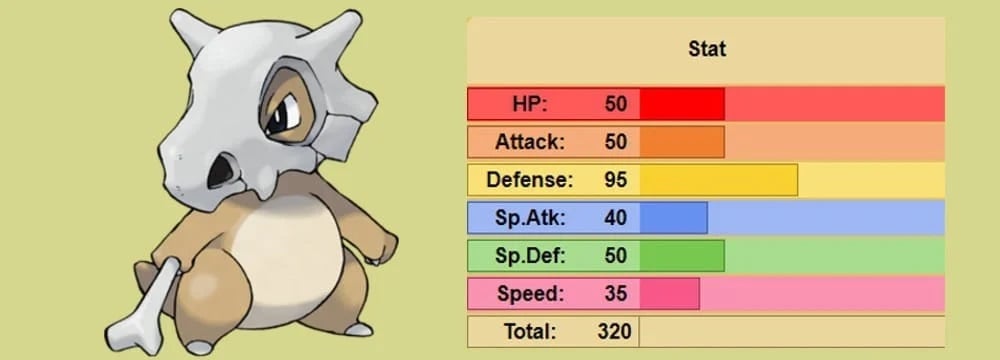
Cubone is a dark horse when it comes to popularity in the Pokémon world. For my money, it is my personal favorite design of the whole game. A creature hidden under a skull and brandishing a weapon is certainly unique enough to stand out in Generation 1, especially when compared to some of the weaker human-like designs. What really sells Cubone for me is its use as a plot device in Generation 1, and how it ties into its overall look.
It is no secret that Cubone’s skull is the skull of its dead mother, a rather dark and twisted trait the lonely Pokémon has. It is through this, though, the Lavender town portion of Gen 1 becomes iconic, as the ghost of Cubone’s mother, a dead Marowak implied to be killed by Team Rocket, haunts the halls and prevents the player from finishing the dungeon. This moment in the game has a life of its own now, and even made a prominent plot point in the second episode of the Pokémon Origins anime. It also gave Cubone, a Pokémon that can only be found in Lavender tower, a sympathetic backstory that few monsters in the series have.
It is one of the best examples of design meeting theme in Generation 1, and the sort of patented “hands off” storytelling that the Pokémon games often play around with. This is even referenced with the Alolan Marowak form being a Fire/Ghost type, so the entire story of Cubone and its design is ingrained into the lore of the entire franchise in ways that another Pokémon only dreams of. Cubone is also a powerful monster to boot; a pure Ground-type with high 95-defensive stat, it put some of the most defensive Pokémon to shame thanks in part to its more balanced attack and HP numbers. In Little Cup formats, a special item called the thick club doubles its 50-attack stat, making it a powerhouse for those unprepared for it.
Cubone’s weakness in the end were the same weaknesses Marowak has when it comes to competitive play: it’s a one-trick pony that can hit hard thanks to its thick club, but otherwise can't do much else. Its speed stat is its weakness, as a slow Pokémon with even above average defenses is worn down easily in singles and doubles formats. The new Alolan form, plus a slew of more oddball moves such as Thunder Punch and Low Kick, give the Pokémon options, but its best use now in doubles format is a hard-hitting check thanks to its Lightning Rod ability, or a Trick Room sweeper that can cover pretty much most of the Pokémon in the game with its absurd thick club enhanced attack stat.
Best Pokemon of Gen 1 - Gengar
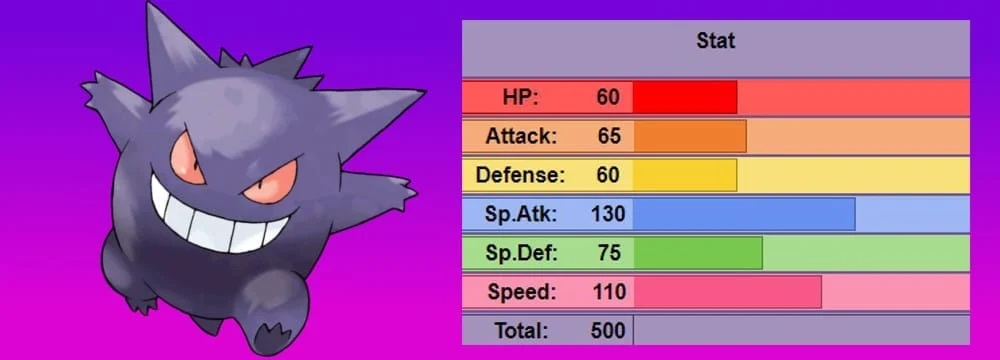
Gengar’s history is perhaps the most sordid out of all the Generation 1 Pokémon. One of only three original ghost types, one of the rarest Pokémon to get due to Haunter only evolving by trade, and the only Pokémon in the entire series to be a top tier threat for over twenty years, according to fan-made tier lists such as Smogon. Gengar is perhaps the most competitively used Pokémon of all time thanks to its speed, diverse move pool, and dual Ghost/Poison typing.
None of this is hyperbole either; sporting a 130-special attack and 110- speed stat, Gengar is fast and hit hard against top threats for seven generations. It is kind of ironic that the first Generation was Gengar at its weakest, namely because of the imbalanced power of Psychic types like Alakazam, but it was always used as a sweeper Pokémon due to its high speed. From Taunt to Hypnosis, Sludge Bomb to Shadow Ball, even a mega-evolution to pack on more power, made Gengar so potent that the 7th generation saw his first true nerf: the removal of Gengar’s coveted Levitate ability, allowing it to be hit by Ground types for the first time since Generation 2. Even this didn’t really slow the Shadow Pokémon down much in the end, as it is still considered one of the top-tier threats in the series today.
Backing up all this competitive viability is a sinister design, of course. The purple colored-gas ball is another example of simple done right; take a vaguely human shadow shape and add an iconic face. The Cheshire grin hides a mischievous malice, the great red eyes always cast down to an evil gaze—Gengar is one of the few Pokémon to embody the games' more malign nature, a trait many Ghost types share to be fair. Part of the design philosophy of Gengar was being a doppelganger, a copy of a person, which fits the Pokedex entries of it copying human shadows. Combine this with its overall look, and many fans speculate it is the dead or shadow version of a similarly-shaped Pokémon in the game, most notably Clefable. Regardless of the rumors, Gengar is just simply well-designed from every facet of its being and has remained a powerful monster on any team to this day.
Oh, and it’s worth mentioning that Gengar is reportedly Sugimori’s favorite Pokémon in the games. That alone should tell you how good the design is.
Best Pokemon of Gen 1 - Gyarados
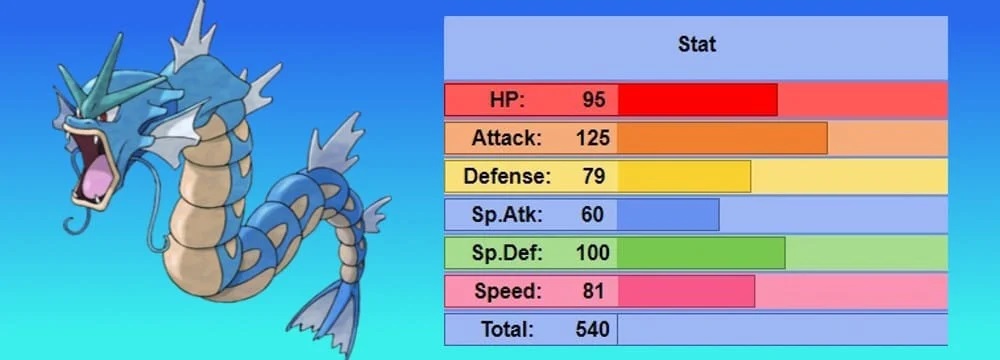
Oh Gyarados, you are a special Pokémon in many ways. Anyone who cut their teeth into Pokémon Red and Blue knows of the shady Magikarp salesman attempting to sell you a weak Pokémon for 500 pokedollars. I know no one who ever bought the Magikarp, instead using an old rod anywhere in Kanto to pick up their own. Magikarp is iconic in its own as being one of the worst Pokémon in the game—hard to gain experience with, impossible to battle with, and outside of surprise flail attacks, completely useless in competitive battles.
Then it evolves.
Gyarados' design is a complete 180 to Magikarp. A large, serpentine dragon invoking Chinese folklore, Gyarados is defined as a unique design by this total transformation. Much of its design is based on an old Chinese legend, where carps were believed to leap over the fabled Dragon Gate. Their prize: to transform into Dragons themselves and fly into the sky highlights a lot of the design motifs for Gyarados. The dual Water/Flying type, the use of Dragon-type abilities such as Dragon Rage and Outrage, even the physical change from the wimpy carp to the powerful dragon—all of this from a design standpoint gives Gyarados great character due to the perseverance of raising it to that level.
Gyarados is a perfect example of tangential learning, or the ability to self-educate on a topic if exposed to them in a context that they can enjoy. Pokémon as a series is often filled with references to mythology, history, science, and more for those willing to look, and everything, from the naming conventions of the Pokémon to their overall design, often reflects that minor detail that enriches players' love for the series.
Gyarados is more than just an achievement in-game; it is also a competent battler. Its typing and low speed are major weakness in some cases, but its raw power with a hefty 125-attack stat and plethora of hard-hitting moves give it an edge on any team. The first game saw Gyarados being a massive threat with the likes of Surf, Thunderbolt, and Body Slam; today it fits a sweeper role with the move Dragon Dance coupled with physical coverage, such as Waterfall, Earthquake, Crunch, and Bounce. All in all, a powerful addition to any team.
Best Pokemon of Gen 1 - Scyther
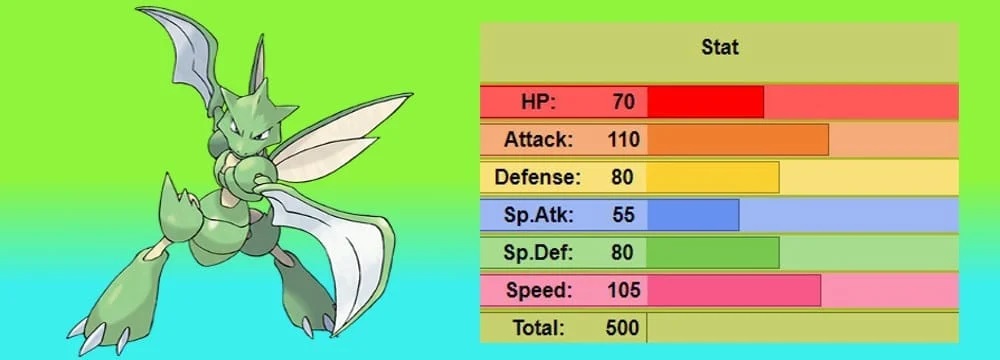
Bug-types are often overlooked in the Pokémon series, mainly because of their plethora of weaknesses and their overall lower-based stats compared to other types. It would also take a while before Game Freak would give Bug-type Pokémon an offensive presence; the move Bug Bite, a move now on almost every Bug-type in the game, was not introduced until Generation 4 for example, and most bug-type moves before that were either too low in power or too unreliable to use. In fact, Bug-types have offensively the worst luck in the game, with seven resistant types and often requiring a good dual-typing to be a potent threat.
Yet in Generation 1, Bug-types arguably had some of the best designs in the entire game for a single typing; yes, even the lowly Paras and Parasect are included in that list. If one design had to top them all, it would by Scyther in the end; a large, mantis-like Pokémon with reptilian features—a sort of motif in the early Pokémon games—brandishing two large scythes for its hands. This bipedal monster screams respect and is often given it in other forms of Pokémon media.
A lot of that comes from the Pokémon anime, where an older Scyther was featured prominently during the Orange Island Arc under the control of the character Tracey. Scyther's portrayal in the show mirrored that of Charizard in the sense of giving the Pokémon a very distinct personality; this helped in setting it apart from the rest of the cast, something the early episodes of the anime struggled to deal with when it came to the Pokémon on the show. It also gave the rare Bug/Flying-type more exposure and has used the anime template to inform players about its primary use in a battle—a swift, offensive threat.
Scyther is one of the few Pokémon that is often banned from Little Cup formats because of its 500-base stat total, which puts other unevolved Pokémon to shame. Sporting a fast 105-base speed and 110-attack stat, Scyther also utilizes popular boosting moves such as Swords Dance and Agility to give it godly sweeping potential, or items such as Choice Scarf to make it outspeed many threats right out of the gate. Since it is also an unevolved Pokémon, it has access to Eviolite to shore up its weaker defenses. Scyther is often overshadowed by its evolution Scizor when it comes to competitive play, but it would be foolish to underestimate Scyther, especially when its versatility of item use and in-game move pool give it an edge despite its defensive shortcomings.
And there you have it, the six Pokémon that, for my money, are the best designed Pokémon in the first Generation. We must always have a Yin to the Yang, though, so next time, we will be covering what I feel are the worst Pokémon of Generation 1.
Do you agree with these choices? Do you have a Pokémon I may have overlooked for this list? Leave your comments below.
All Stat Blocks are courtesy of Bulbapedia
Have a tip, or want to point out something we missed? Leave a Comment or e-mail us at tips@techraptor.net
